Defective aircraft carriers and their price to society
Как featured falklands, light aircraft carriers, especially in the British case, with short take-off and vertical landing aircraft, have extremely limited applicability, and in the case of the Falklands, their “success” is not at all a consequence of their tactical and technical characteristics, or the qualities of the aircraft based on them.
But the limitations that exist for light aircraft carriers are actually far wider than those demonstrated at the Falklands.
The problem is that light aircraft carriers not only cannot provide a sufficient number of sorties per day or the basing is normal aviationas was the case with the British in 1982.
The problem is that these ships are often not applicable at all. This applies not only to carriers of “vertical flyers”, of course, but to all small aircraft carriers in general, including ejection carriers (the same Argentine aircraft carrier “May 25” is also on this list).
Excitement factor
Speaking of light aircraft carriers, and in this case, it’s already not related to what kind of aircraft they carry on board, one cannot ignore how their combat effectiveness is affected by the excitement factor at sea, or, quite simply, pitching.
The ability or inability to lift and receive aircraft directly depends on how often and at what angles the deck level fluctuates. To understand the issue and remove some illusions, we will touch on the question of pitching in more detail.
There are six types of ship pitching: longitudinal, side, keel, vertical, transverse, yaw.
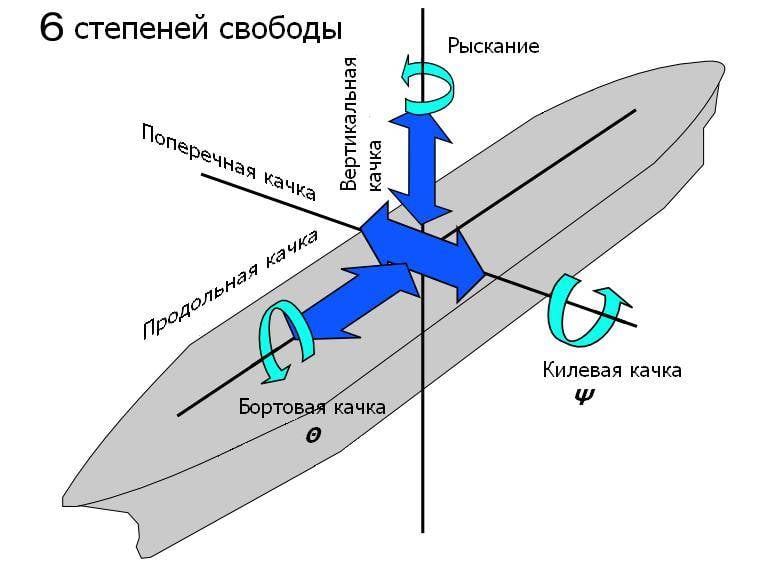
Of these, the vertical, keel and the vertical generated by it are the most important. Let's take a closer look.
The most problematic type of pitching, at first glance, is onboard. It creates a roll and affects the stability of the vessel. For the aircraft carrier, on which the plane lands on wheels, the roll of the deck, in theory, is critical.
But there are nuances. Side rolling can be eliminated by technical methods. A special form of the underwater hull, damping tanks, especially active ones, with a flow of water depending on the pitching, onboard rudders and on some ships gyroscopic dampers, allow in theory to reduce the pitching amplitude by several times.
The problem of a light aircraft carrier is its small size, which does not always allow placing such systems on board in full. Today, one warship is known where various types of jointly working pitching dampers have reached their ultimate efficiency - the French aircraft carrier Charles de Gaulle. But it is not quite light, its displacement exceeds 42000 tons. On smaller ships, you have to be content with the worst sedatives.
Again, in theory, you can go at an angle to or against the wave. Then the effect of side rolling decreases.
But keel and vertical will begin to operate in full force. And here an insoluble problem arises - if you can reduce the pitching amplitude by various ship systems (sometimes at times), then nothing can be done with pitching and pitching.
VERTICAL AND KEEL PUMP IS NEUTRALIZED ONLY BY SHIP SIZE BY WATERLINE AND DRAIN. And no other way. Bigger sizes, less pitching, smaller sizes, pitching stronger.
And now this is really critical. Vertical pitching operates in the middle part of the deck and at the extremities, and a plane landing vertically will always catch a blow from the deck going up towards it, and taking into account also pitching, going upward at an angle. In the center of the deck too. And it is not fatal. It must be clearly understood that when we see the Harriers neatly landing somewhere in the warm coastal waters on the video frames, this is one thing, and the reality of real TVDs can be completely different.
Of course, on small aircraft carriers with normal aircraft, all these factors also act in full.
The video shows an escort aircraft carrier Siboni (USS Siboney CVE-112) in the North Atlantic in 1950. With a standard displacement of 10900 tons, it had a total displacement of 24100. Of course, it had smaller dimensions than the same Invincible, although the draft was greater. But in order for an aircraft carrier to be unable to lift and take back planes, it is not necessary to bury your nose in a wave.
For comparison, flights from a Nimitz type aircraft carrier under almost the same conditions (this is obvious when looking at the waves).
It is quite difficult to fit calculations for wave pitching in waves in the format of the article, they are very voluminous and require understanding of many aspects of the interaction of the ship’s hull with water for different types of waves (different wavelengths, their heights, for regular and irregular waves, at different ship speeds, with taking into account the possible resonance between the period of natural oscillations of the body and the waves, etc.). In addition, many have not studied higher mathematics, and of those who studied, many have forgotten.
Let's just say that for the same cargo ship, an increase in draft from 8 meters (like the Invincible type) to 11 (like the Eagle type in its latest configuration and at maximum displacement) leads to an increase in the pitching period by calm water (without excitement) by about 15%.
On the excitement, and taking into account different not only draft, but also the length of the ship (and the ratio of the length of the hull along the waterline to the wavelength is very important) everything will be much more dramatic.
In regions such as the South Atlantic, North Atlantic, Barents or Norwegian Seas, the number of days in a year when an aircraft carrier of 50 or more thousand tons can still be used, but an aircraft carrier of 15-20 thousand tons is no longer available, counts at least many tens days. In some years, up to hundreds.
That is, light aircraft carriers are obviously inferior, almost intuitively clear to almost everyone, but how inferior they are, it becomes clear only if you delve into the question.
In collision with fleetBased on the solution of key tasks on small-sized carrier ships, it is enough to just wait for moderately bad weather. Three points - and not a single aircraft from a small aircraft carrier will fly into the air.
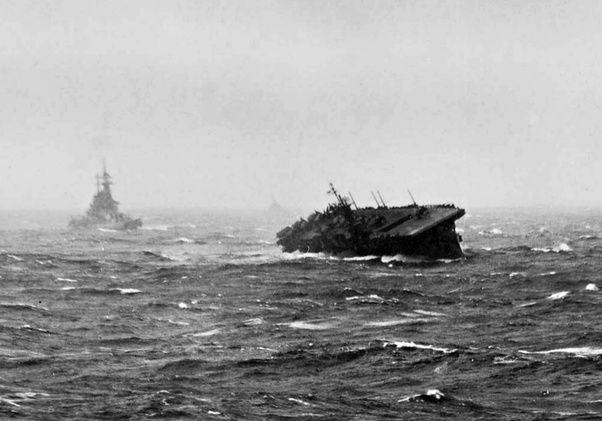
And what’s the funniest thing about all this is that you also have to pay for these “combat capabilities”. Britain had to pay MORE for them than for trying to keep normal ships in combat. This fact is not obvious to many, but it took place, and, in the light of some events brewing now and around our fleet, it is worth studying it in more detail.
Like history the collapse of the British carrier forces in general.
Aircraft carriers and Labor
The extremely instructive history of the degradation of British aircraft carrier forces can begin to be measured from the beginning of the sixties, when fundamental decisions were made. By that time, the enormous forces of the Royal Navy were already undergoing a process of dramatic cuts. Under various pretexts, the Navy removed all light aircraft carriers of the Colossus and Majestic types, most of which were sold to other countries (in a curious way, after a while, Argentina, the future enemy, was on the lists of these countries).
By the end of the first half of the sixties, the British aircraft carrier forces consisted of four light (up to 28000 tons) Centaurus class aircraft carriers, among which was the future hero of the war with Argentina Hermes, one aircraft carrier of the Illastries type - Victories, and a pair of Odessa "-" Eagle "and" Ark Royal. "
For economic reasons, Britain could not contain such a fleet for more or less significant time, however, in case of war with the USSR, it was required to be able to use at least 4 aircraft carriers. In addition, Britain was constantly involved in various conflicts throughout its former Empire, which continuously demanded the use of the fleet and naval aviation.
In their condition, the ships were not the same. Particularly distinguished light aircraft carriers. The Centaur was already unsuitable for deploying modern combat aircraft on it, and the flights of Sea Vixen and rare single Skimitars were worth a lot of effort. In fact, this ship was kept in service only to replace other ships when they were being repaired.
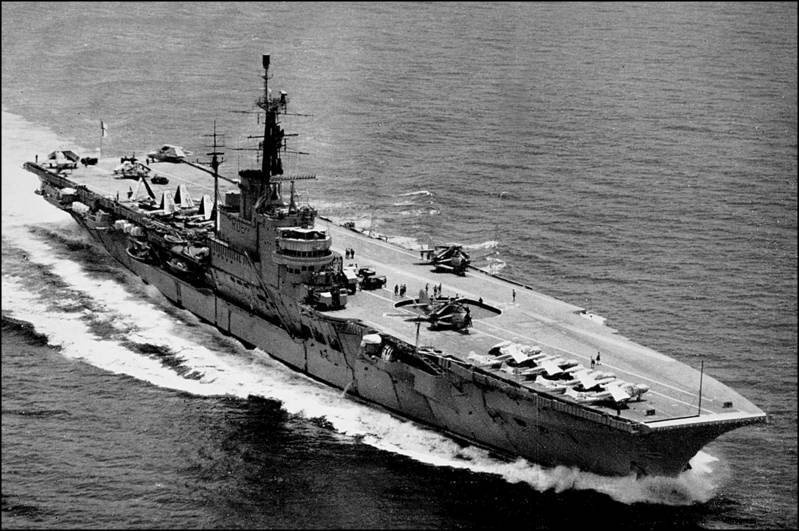
"Albion" and "Bulvark" have already been converted into the so-called "Commando Carrieres", in fact, landing helicopter carriers, and as such were used.
The Hermes has been more distinguished since the deck was built and exceeded its sisterships in its ability to use combat aircraft. In the late 60s, American Phantoms even flew a little from it, although the ship, due to its small size, was ultimately unsuitable for their base. But the “Bakanirs” and “Sea Vixen” flew with him without problems.
The Victories was almost completely rebuilt in the late 50s and was essentially a new ship. From domestic experience it is difficult to find a restructuring comparable in depth, unless the transformation of the Admiral Gorshkov TAVKR into the Vikramaditya aircraft carrier. The ship got the opportunity to use modern jet aircraft at that time and was intensively and successfully used, including in military operations. In 1966, several Phantoms from the American Ranger aircraft carrier made flights from it, showing that, in principle, the ship could carry modern aircraft, although it would require additional modifications.
From 1959 to 1964, the Eagle underwent intensive modernization for the use of more modern jet combat aircraft, and electronic weapons were especially deeply modernized - the ship received a three-coordinate radar capable of tracking up to 100 targets simultaneously, and an air conditioning system was installed for the comfort of personnel compartments. Although the ship, partially built during World War II, had a number of reliability problems, in general its condition could be firmly regarded as “satisfactory,” and it remained so until the very end of the service.
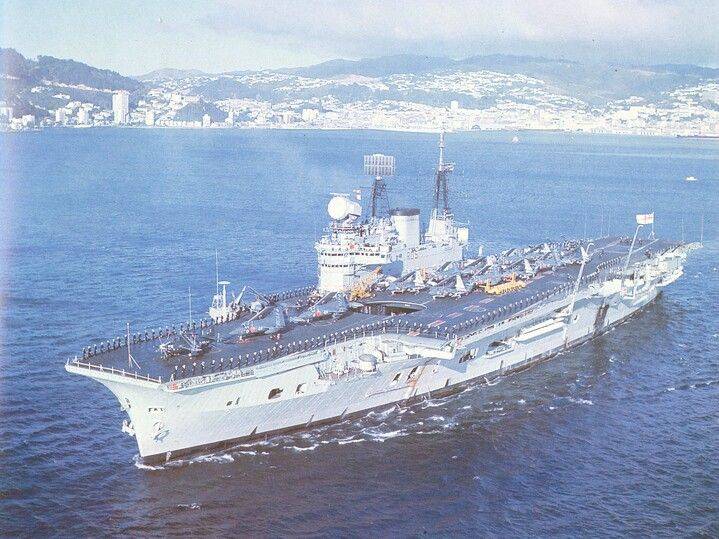
“Ark Royal” experienced constant problems with technical serviceability and, against the background of its eagle, “Eagle” was notable for low reliability. This ship, formally referring to the same type as the Eagle, was simply plagued by technical problems. During construction, he immediately received a larger angular flight deck, but in the end went into operation four years later, and was already being completed “with tension” - the construction was largely outdated by the time it entered service even at the level of individual components.
Its economic speed was 4 knots lower than that of the Igla - 14 versus 18, which in those years were the standard for most warships in the world. The maximum speed was half a knot lower.
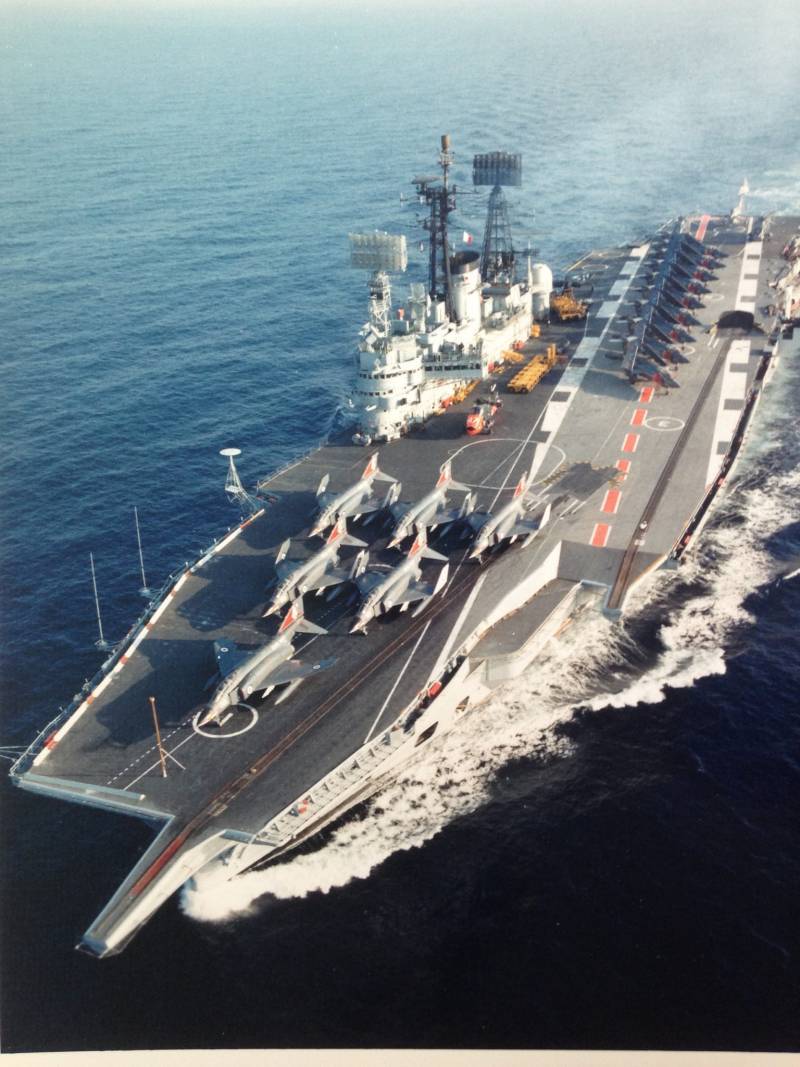
In the years 1964-1965, the future of the British aircraft carrier fleet seemed to be as follows. There was a project CVA-01, heavy aircraft carriers, the lead ship in the series of which was to be called "Queen Elizabeth", a very interesting project.
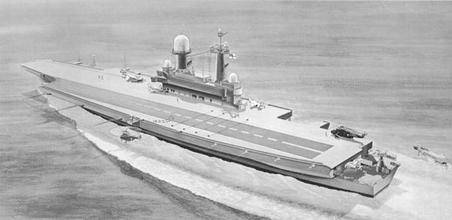
It was assumed that the Hermes and Eagle, as the most reliable ships and the best in terms of tactical and technical characteristics of their classes, will continue to serve, the remaining Centaurs will be decommissioned slowly, the Victories will be in operation until the Queen Elizabeth will not be built, and then it will be withdrawn from combat. In this form, the carrier forces of the Navy should have existed until the beginning of the 80s, and there would have been a different situation. The remaining ships were awaiting withdrawal to the reserve and subsequently disassembling for metal, or immediately disassembling for metal. An important point - the carrier of the Phantoms was originally supposed to be the Eagle, and not the Ark Royal, as it then happened.
True, the most perspicacious economists and politicians in Britain already understood that the new aircraft carrier, CVA-01, the country in its then condition would not pull. But the old ones were in service.
In order to evaluate the “wisdom” of the decisions made by the military-political leadership of Britain a little later, it’s worthwhile to quickly assess what kind of military operations the British aircraft carriers had to participate in in the 60s and early 70s (“Eagle” was withdrawn from combat in 1972, it will be considered in some way a point of no return).
In 1956, the Eagle was used during the Suez crisis.
In 1961, the Victories traveled to the Persian Gulf to put pressure on Iraq, the first to claim Kuwait. A few months later he was replaced by a small Centaurus.
In 1963, the Centaurus and Hermes were sent to Southeast Asia, where an attempted coup attempted by Indonesia took place in the British protectorate of Brunei.
Later, also in 1963, the Centauri air group participated in an operation to counter an armed uprising in what is now Yemen.
At the beginning of 1964, the Centaur and the Albion converted into the Commando Carrier, with the commando squad on board, defeated the rebels in Taganyika - now Tanzania.
In 1964, Victories was sent to Southeast Asia to support Malaysia in its confrontation with Indonesia.
In 1965, the Ark Royal was used during the naval blockade of Rhodesia.
Obviously, the tasks of aircraft carriers for many consecutive years were strikes along the coast in different parts of the former British Empire and the protection of landing troops there from the air. By that time, the Cold War had been going on for almost twenty years, no military conflict between the USSR and the West had yet occurred, moreover, there was some kind of detente after the Caribbean crisis was peacefully resolved, in fact there was not a single serious reason for so that in the foreseeable future, something changes in the use of British aircraft carriers.
Another thing has changed. In 1964, the Labor government came to power in Britain. Domestic political and economic affairs of those years in a country far from us and an alien, this is one question. But the fact that in naval matters the new cabinet has clearly "broken firewood" is different and obvious. It is difficult to say what the Laborites were against the carrier fleet. At first glance, they wanted to save money for the country.
But later we will see that the conservatives would have brought the savings, while the Laborites, on the contrary, had spent much more than was necessary with extremely dubious results. Most likely, the way they initially cost the carrier forces was due to ideological reasons. As we know, left-wing politicians often tend to “drive” reality into the framework of their meager ideas about it. The fate of the British carrier forces bears clear signs of such an attempt.
From that moment, it is worth counting the history of the decisions that led the British Navy to what it turned into the Falkland War.
In 1966, a White Paper on defense was released in Britain, which clearly stated that the era of aircraft carriers in the British Navy should end in the early 70s. The document was issued at the direction of Prime Minister Harold Wilson under the leadership of Minister of Defense Dennis Healy. The main idea of the document was as follows.
Britain refuses global political claims and a global military presence. Britain will not conduct military operations other than military protection of the allies in Europe. Britain should focus on preparing for war with the USSR in Europe as part of its membership in NATO. Military mechanisms redundant for this task should be eliminated. This was the first concern to aircraft carriers.
Meanwhile, Britain still had (and still has) a lot of overseas possessions. How was it possible, having previous military experience of the 50s and 60s, having a lot of overseas possessions and some warming from the USSR, to issue such a thing? This looks like a clearly ideological solution, which absolutely does not correspond in any way with what the British Navy really and continuously did in previous years.
The inertia of earlier decisions, however, has been affecting for some time. So, in 1966, “Eagle” embarked on a new modernization. He was replaced by one of the air finishers, to ensure the landing of more high-speed aircraft than the Bacenirs, and the long side catapult was scalded with thick steel plates. This made it possible to protect the catapult from the exhaust of Rolls-Royce “Spey” engines, which the British Phantoms were equipped with, and in the long run made it possible to ensure the mass launch of such aircraft. In this form, the ship was used to test the "Phantoms" and showed itself on the good side. This modernization, however, was not complete, as already mentioned in the previous article.
And this was the last sensible step in the history of the British carrier fleet. Then came the collapse.
The Eagle, which under the Tories was planned as the main carrier of the Phantoms, never became one. Successful testing of these aircraft on it became his "swan song."
In 1967, a fire occurred on board the Victories, which was undergoing regular repairs. The damage he suffered was minor, but politicians immediately took advantage of this as an excuse for decommissioning the ship. At the same time, it must be understood that until the mid-seventies the ship would have passed without problems, and perhaps would have passed more, because during the restructuring of the fifties, from the old "Victories", in fact, only the hull remained, and even not all, even the turbines were replaced . The ship did not experience any special problems with reliability and regularly underwent repairs.
I wonder if he would have reached 1982? This question will remain open, it cannot be firmly answered, “yes”, but there is no reason for a firm “no” either.
Then, for some strange reason, it was decided to rebuild not the peppy Eagle under Phantoms, but the crumbling Ark Royal. It was rebuilt under the Phantoms, but it was only rebuilt strangely.
Ark Royal received elongated catapults. But, apparently, their thermal stability remained at the level of the old ones, at least to find information on reinforcing the gutter of the catapults similarly to the Igla airborne catapult has not yet been obtained, which means that the mass lifting of the Phantoms from the ship could be impossible.
The ship, however, received a complete set of reinforced finishers, and gas deflectors, which the Igloo lacked. At the same time, they didn’t completely rearm “Ark Royal” on “Phantoms” - the “Bakenirs” were still the most numerous type of aircraft on board, only now reconnaissance and refueling in the air, as if from “Phantoms”, had been added to their role as attack machines Would be the worst scouts.
Oddly enough, the modern electronic weapons that the Eagle was equipped with, primarily the radar, did not get to the Arc Royal, he remained with his old, not quite adequate equipment, having received only the American AN / SPN-35 landing control radar , which increased its compatibility with US Navy aviation.
In 1972, Britain again had to fight with the help of aircraft carriers - Guatemala tried to "probe" the defenses of Belize, which had just become independent, and Ark Royal went to the next colonial war - to strike at the coast. Reality seemed to tell the British what they really expect in the future, but they did not listen.
In the same year, “Eagle” was withdrawn from the Navy, formally, in reserve, in reality, it immediately began the mass dismantling of components for the Arc Royal, which is experiencing permanent breakdowns, and it was clear that the ship would not return to service.
The Wilson government, meanwhile, actually launched the dismantling of the former Empire. Troops were withdrawn from all bases in the Persian Gulf and the Far East, Singapore and Malta were left, the British left Aden (now the territory of Yemen), the TSR-2 program was stabbed, the last chance for the British to remain in the league of leading aircraft manufacturers, and, of course canceled all new projects of aircraft carriers.
Britain from the third in the world in terms of political and military influence of the power turned into the American "six" that we know today. What was offered in return? The Kestrel vertical take-off and landing project, which was later destined to become the Harrier, the future Tornado, and, for some reason, an attempt to join the American F-111 front-line bomber project, failed.
There was an attempt to turn the island into a continental force, almost a success. In 1970, Wilson lost the election, but in 1974 he returned to the office and occupied it until 1976. At this point, almost nothing remained of the old aircraft carrier fleet. Hermes was in service, which from 1971 to 1973 was amputated by catapults and air finishers, turning it into a landing helicopter carrier (“commando-carrier”) and lasted until the last days of “Ark Royal” whose condition did not allow us to hope that it could to live a more or less significant time. The ship, which in good times did not shine with reliability, since 1970 cut money for repairs in order to save money, which did not remain without serious consequences.
Even today, British blogs and social networks are asking a question: Could Ark Royal prevent the Falklands war if it remained in service? The question, however, is that in 1978 the fallacy of abandoning carrier forces in Britain was already recognized, and if the Ark Royal could be left in service, then, apparently, they would have left it. But he was literally falling apart.
It was necessary to leave Eagles and, possibly, Victories. And still it was not necessary to touch the Hermes, giving him the opportunity to carry at least only the shock Bakeryn. But by that time it was too late.
But the most interesting thing in this story is how much real money was saved on the rejection of aircraft carriers.
Money to the wind
A complete alteration of the Igla to base an air group, wholly or largely composed of Phantoms, in 1972 would cost no more than 30 million pounds.
Minimum improvements “under the Phantom” in the form of two more air finishers, reinforced gas deflectors and a heat-resistant box for the second catapult in 1968 would cost only five million.
If the ship would stand in reserve for some time due to lack of money, waiting for reactivation, then for each year the maintenance of the reduced crew would require 2 million pounds, and then, every four years it would be required to spend 4 million on repairs. In this case, the return to duty would take about 4 months.
As a result, it was possible to go according to two options, even if it was impossible to maintain even one aircraft carrier, then spending 5 million on minimal modifications the ship could be put in reserve, a year that way in 1970, after which it would be necessary to maintain it in a “living” condition works in 1974 and 1978. There, the economy was already not so bad, but for the money such an operation would have fallen to 32 million pounds for ten years under Scheme 5 in 1968, 2 each year until 1974, then in 1974 6, from 1975 to 1977 again, again two, and in 1978 again 6. Naturally, these are figures excluding inflation, which then seriously accelerated, and inflation would have been somewhat different.
“Phantoms” by that time had already been bought and mastered by the crews, “Bakenirs”, too, it did not require any special expenses. Hermes could also act as a "school desk" to maintain the skills of the Phantom pilots in working from the deck.
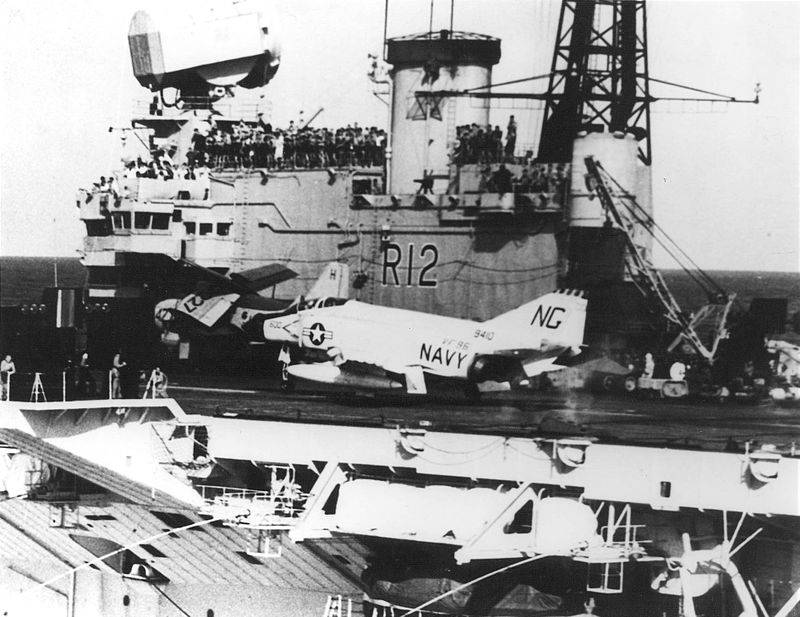
In the ideal case, it was worth paying an extra 30 million for upgrading the Igla, installing Ark Royal as a source of spare parts, and going through the seventies with Eagle and Hermes - with all the minuses of the latter as an aircraft carrier (small size), he, nevertheless, he was much better than the ships that replaced him. An important point - this option would be CHEAPER than what the British actually did with their aircraft carriers.
The fact that Hermes quite decently served up to 2017 (in the Indian Navy as “Viraat”) suggests that there was no problem maintaining it in the ranks - just as it did not in reality.
We don’t know how much money the British lost on the endless breakdowns of the Arc Royal; we don’t know the money that could be used to modernize the Igla for the restructuring of the Arc Royal and Hermes. Saving did not work, it turned out to overpay.
But these were trifles compared to what began later.
As already mentioned, apparently, the Labor government was puzzled not by saving money, but by turning Britain into a kind of appendage of the United States, deprived of the opportunity to pursue an independent policy. Therefore, while there was a creeping destruction of the British aircraft carrier forces, in parallel, from 1966 (we recall the “White Book”), a project was created that was destined to become an invincible aircraft carrier in the future - an anti-submarine cruiser and command ship, which was supposed to protect against Soviet submarines transatlantic convoys.
After the dismissal of the Labor government in 1973, the project grew into an almost aircraft carrier with a displacement of 16500 tons. In 1973, a year after the cancellation of the Igla and even before it was plundered for parts completely, an order for the construction of the lead ship in the series was issued. At that time, Hermes was converted into such a disabled person.
In 1975, the Labor government decided that helicopters still could not be dispensed with, it was necessary for someone to drive away the Soviet Tu-95RTs, which, as they believed in the West, would send Soviet submarines to convoys. And the government issued a contract to develop a marine version of the Harrier, which had previously been created as a short-take-off attack aircraft for the Air Force.
The savings turned out to be just excellent - instead of placing all the necessary helicopters and several interceptors on the existing Hermes, it was first mutilated (for a lot of money), then they spent additional money on creating a marine version of the Air Force attack aircraft capable of intercepting in the air, and - here she, the main economy - began to build a series (!) of aircraft-carrying ships! Just three years after the Eagle went into disassembly, just five years after the Victories was decommissioned and two years after the Hermes light carrier was converted into a helicopter carrier for a lot of money . Now, firstly, it was necessary again to remake the Hermes back to the aircraft carrier and set the springboard, return the equipment for managing the flight of groups of aircraft, secondly, order the Sea Harriers and pay for them, and, of course, build new light aircraft carriers
Tentatively, the whole saga cost Britain more than £ 100 million from 1966 to the 1980s, at the rate of the sixties (by the time the Invincible entered into operation, the pound had already depreciated by more than 3,8 times and prices were numerically different) .
Good savings compared to 30 million for the complete reconstruction of the Igla and its contents, no matter how expensive it may be, in any case, we can’t talk about more than six million a year from 1968 to 1980, which would ultimately provide a full-fledged aircraft carrier by 1980, a little more than the same one hundred million during this time, with most of them would have been paid at the beginning of this period.
Opponents of such a theory may point out that in 1972, before being written off, the Eagle ran aground and received extensive damage to the underwater part of the hull, but this can in no way be an excuse for what happened, if only because he was in the dock at that time nothing like this would have happened on the “Phantoms” alteration, and there could have been no such extensive damage to the corps as the defenders of British government policy tried to prove later.
And how much would an unborn CVA-01 cost? And here we are waiting for the most interesting. In 1963, three years before the draft of a new heavy aircraft carrier was canceled for reasons of economy, then Secretary of Defense Peter Troinicroft called the figure ... 56 million pounds. Despite the fact that his critics insisted that this money could not be met, and the ship would leave at least a hundred. Given inflation, we can really say that the remodeling of Hermes, the construction of Invincible, the creation of Sea Harrier and the endless repairs of Arc Royal between 1963 and 1980 were slightly cheaper. About a quarter.
Only then, after Falkland, the British had to build two more light aircraft carriers for hundreds of millions of pounds each and equip them with airplanes too.
As a result, saving still failed. It turned out only to overpay, and not just to overpay, but to overpay a lot, with a simultaneous loss of combat effectiveness. CVA-01, if it was built, most likely it would still be in operation, however, it is already “on the brink”. The British Navy would not have lost experience with normal deck aircraft, catapults, and finishers. In terms of combat strength, a bunch of non-disfigured Hermes (served until 2017) and that of the old Queen would be several times stronger than the three light Invincibles. And that would be cheaper. Many hundreds of millions of pounds in eighties, or, to make it clearer, more than a billion pounds in today's prices.
Thus, the cheapest option would be to keep the Igla in service until the beginning of the 80s, with the possible restart of CVA-01 in a new form later, when the economy has already improved somewhat, and the parallel maintenance of Hermes with the Bacenirs, and subsequently with some other small western planes. And it also provided the British Navy with the maximum level of combat power.
But they went the other way and lost their combat power, and, apparently, forever, and overpayed for this loss a lot of money.
The fact that if Britain had normal aircraft carriers of the Falkland War might simply not be there, but with what Britain declared it, she could just lose, you can not even mention.
Such was the price of a bet on light aircraft carriers.
Good fellows a lesson? Not yet
Why do we need these old stories of a foreign country? Everything is very simple: there are a lot of parallels between what happened in Britain then and what is happening in Russia now.
As in Britain, we have very strong voices of those who offer to abandon the creation of full-fledged carrier forces. Unfortunately, our own propaganda, which convinces the population of the worthlessness of American aircraft carriers, is pouring water into the mill of those who want to avoid Russian aircraft carriers in the future, and this work is being done quite successfully.
Supporters of "continental thinking" are also gaining strength (Russia is a land power, no matter what these words mean).
At the same time, their views are essentially quasi-religious, like the British Laborites, who killed the remnants of the British Empire for the sake of their ideas, which later did not pass the reality test. These people do not hear any arguments and do not want to learn anything, because they are sure that they already know everything (and in fact they even have huge problems with logic).
They can provide numerical data on how much tonnage our main enemy can attract to deploy troops in Europe and show what proportion of our fuel is in the energy balance of European NATO countries. But they will still be talking about the fact that we must invest primarily in the army, we are a land power, and the fact that invading us from the West is technically impossible, come on, they want to invade - they will invade, we are a land power, we must invest in the army . No arguments just work.
They can be shown on a map of the NSR and Kaliningrad, Kuril Islands and Sakhalin, talk about Sabetta gas and Norilsk nickel, show what proportion of domestic export goes through ports, but they will still say that Russia does not depend on sea communications.
There is no thought process behind all this, but this contingent affects public opinion, if only because the masses are not able to think logically.
And the masses would be okay, but we have such politicians, and who knows how much power such a contingent will have tomorrow. And whether some sly rat like Harold Wilson, but with a Russian passport, is using these moods.
In non-monetary Britain of the late 60s, everything was also on emotions, the result is known.
Just like in the case of Britain, we have something - an old aircraft carrier that could well be restored and serve for many more years. There is ship aviation armed with normal planes, which can also be brought into a fully operational state.
Even there is a “fire on“ Viktories ”- a fire on“ Kuznetsovo ”, after which legions of paid (and cheap) clicks rushed to fan the panic that the ship should be decommissioned, which burned down by almost a hundred billion (which was obvious rubbish) although it’s still necessary to figure out why it caught fire (as with the PD-50 - in its testimonies the surviving workers from it stated that they felt a blow from below before the flooding began. It would also be nice to figure it out if that). And, as with the British aircraft carrier, the damage in the end turned out to be minimal, and the ship was fully recoverable. So far, our clicks, unlike the British, have failed, although the "script" was the same - distinctly.
As in the case of Britain, there is a tough informational pressure that we need to abandon the normal ship that we have and build an ersatz instead - in our case, it’s UDC like “Juan Carlos” and develop our “vertical lines” . And this is also not the first time in our history, and it is very similar to how the British abandoned normal aircraft carriers and hit the construction of low-performing ersatz.
And we, too, will lose military capabilities and a lot of money on this - a huge amount of money that will be literally thrown into the wind. Like in Britain.
Just as in the case of Britain, we cannot build a new aircraft carrier here and now, but we will be able to master it in the near future, at least in a simplified form (see article “Aircraft carrier for Russia. Faster than you expect. ”) And having tensed a little, we can master a completely full-fledged nuclear ship, we only need to figure out what to do with those shipyards that are needed for its construction later, when it will be built. In the meantime, to bring to a combat-ready state what we already have, the Britons did not use this opportunity. And they got the Falklands.
And just as in the case of Britain, instead of this option, Russia may well rush into an extra-expensive and senseless fornication to create inferior boats and strange and unnecessary airplanes for them - or it will be pushed there.
However, our prospects need to be analyzed separately, and at first one more crazy theory has to be analyzed - that universal landing ships can replace aircraft carriers. Somehow it was strange quickly and tightly she registered in the heads of our citizens.
You have to dissect her too.
To be continued ...
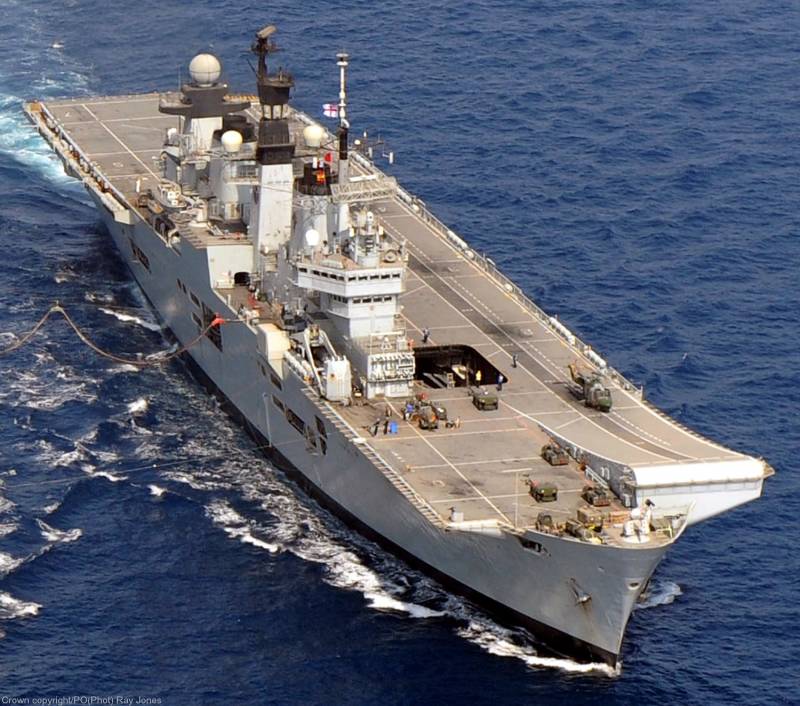
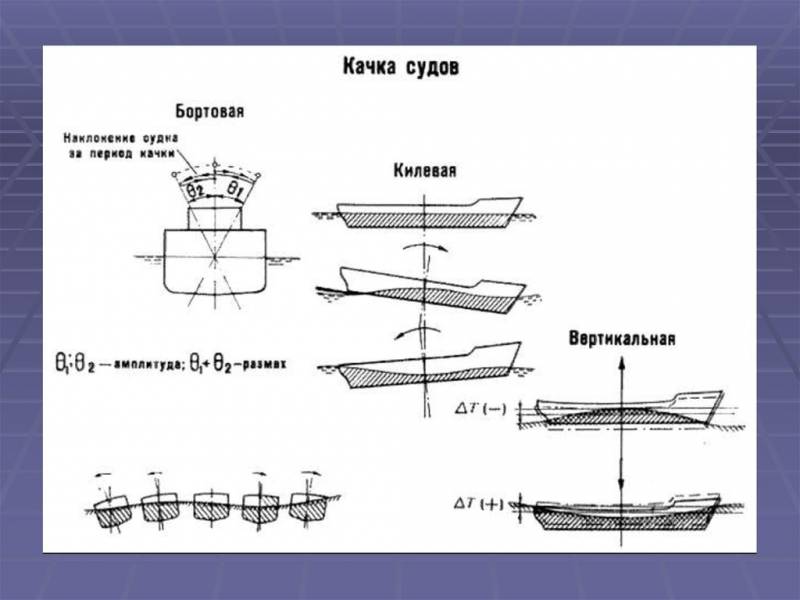
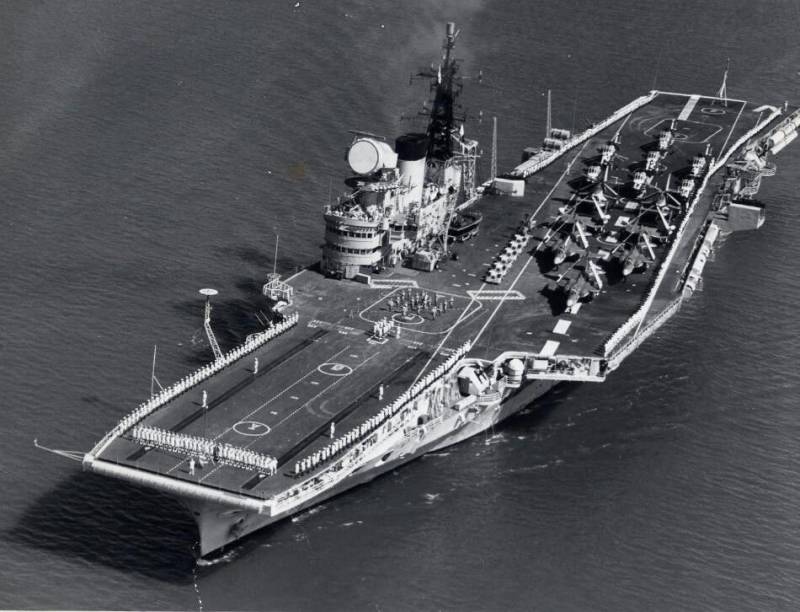
Information